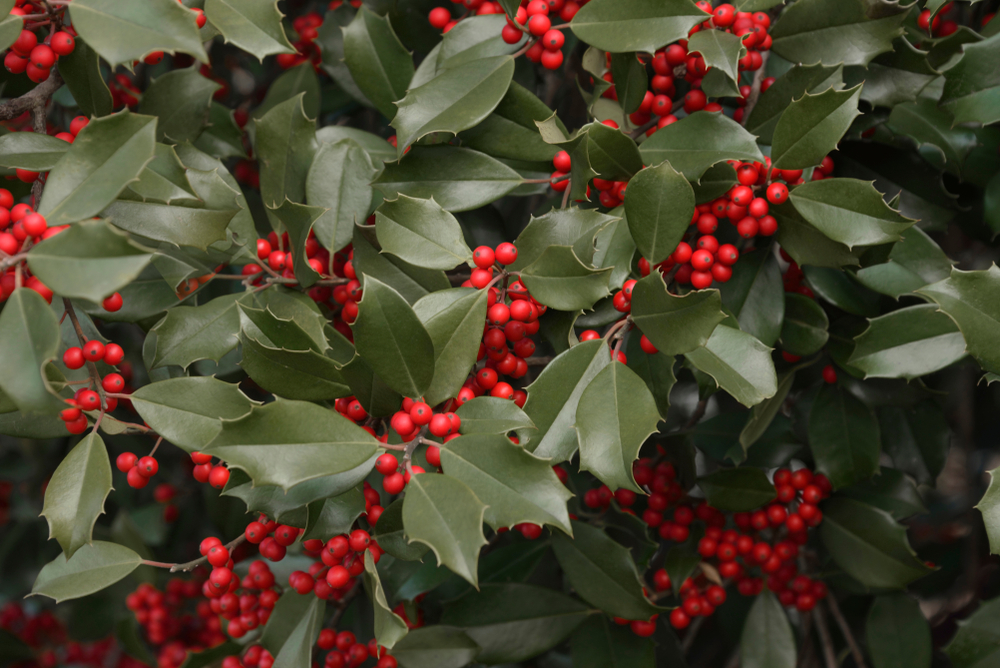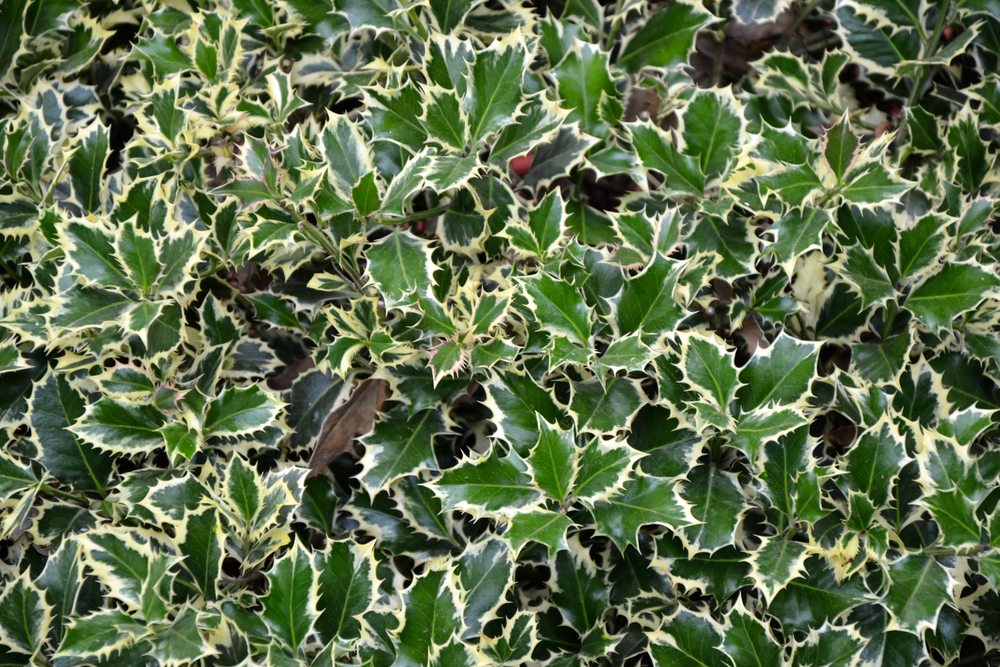

Good morning all & thank you for the thread, Diana ….. it ‘makes’ my Saturday mornings!
No garden work to do, so I’ll talk about something a bit different then. Early in the year, I picked up a guided meditation podcast: Meditation Minis with Chel Hamilton. I figured I’d try them for the fun of it although I really needed something for stress, anxiety & sleeplessness. The very first ‘mini’ I did was themed on the beautiful holiday lights.... so simple, but it stuck with me for days which was a true surprise. I’m not as regular as I should be, but I end up listening to Chel’s soothing voice/meditations (she’s a professional hypnotist … she’s got the voice down pat) when I really need her. It’s gotten so that all I have to do is hear her voice, and I start to relax. I have gone from being VERY skeptical that what she does could make a difference, but it has.
So why am I bringing up meditation on the Garden Thread? Because Chel has one called “Garden of Your Life” and she describes it this way:”The results of our lives bloom from the environment we create. In this guided meditation we visit, plan, tend, and create the garden of our lives. What do you want to grow? Use this meditation to explore, and create it.” Have you ever thought about your life as a garden? It’s interesting to view it that way and envision what your life’s garden would look like if you translated it into plants/flower …. and what you would ultimately want it to look like in full bloom/mature plants. I’d never thought of my life as a garden before …. gave me something to think about.
Another one that is something you may enjoy is“Calm Renewing Green” described as: “The green of leaves, trees, grass and shrubs has a calming yet re-energizing effect on many people. Maybe there’s just something about forests and meadows hardwired into our psyche that helps us feel more relaxed yet hopeful about the possibilities of a new adventure being just around the corner. “ I love the outdoors, the trees, grass (even if I DO have to mow it!) and especially everything growing in my garden so I was drawn to the title.
If you’d like to check out Chel, here’s here podcast via Podcast Republic & you can look for the titles:
https://podcastrepublic.net/podcast/963597166
The only think I dislike are the ads at the beginning, but that is how she helps support her podcast. I have this podcast on my phone app so I just fast forward through the ads – once the meditations start, there are no interruptions.
BTW, if I have trouble going to sleep or wake up in the night & can’t get back to sleep, I put on one of Chel’s sleep meditations (18-20 minutes for my”go to” ones). I’m asleep before they end. :-)
Happy “gardening” all!
A very calm (at this moment) ~Q

Holly is a plant that permeates pop-culture. Whether you’re singing a holiday classic with your grandmother, walking along some neighborhood hedges, or brewing a cup of Yerba Mate to start your day, holly, also known as the plant genus Ilex, is often nearby when you know where to look. Today we’ll dig into 20+ different types of holly and holly trees.
What Is Holly?
Holly, or Ilex, is a plant genus made up of many hundreds of species. Depending on the species, holly can be evergreen or can be a deciduous holly. People can easily recognize this plant with its green leaves with bright red berries – but there is a lot of variety within the genus, too. A wide spectrum of traits distinguishes this broad group: spiny or full and luscious; bright or dark green; sun-loving or drought-tolerant.
Native regions of different Ilex species span from tropical regions to temperate zones and growth patterns vary from evergreen trees, evergreen shrubs, to climbers.
Often, you’ll see holly grown as privacy hedges and on disturbed ground. Holly is generally a very adaptable plant, making these small trees and shrubs popular landscaping additions in the appropriate hardiness zones.
To find out if your home or your garden is in a climate with a hardiness zone appropriate for holly, just do a quick internet search.
The Folklore of Holly
Today the plant is strongly associated with the Christmas season. In pre-victorian Europe, “Christmas trees” weren’t firs and spruces – they were holly trees.
But the folk significance of holly stretches even deeper into certain cultures’ collective history. For example, pre-Christian European traditions linked holly plants to various thunder gods. People planted holly outside their door, believing it would prevent lightning from striking the house. In Celtic mythology, the Holly King is often woven into lore as a giant and often linked to the “green man” archetype of Arthurian legend.
Even today, some superstitions around holly have stuck: it’s bad luck to cut down a holly tree, though, fear not, it’s fine to prune and bring into the home for festive decorations!
Deck The Halls With Dioecious-ness
There’s a lot more to holly than its decorative aesthetics, however. Ilex is a dioecious plant, which means that female plants and female trees are separate from male plants and trees. Depending on the biological sex of the holly plant, you’ll staminate or pistillate flowers.
Holly plants are flowering perennials, flowering in spring and early summer. Bees conduct pollination, turning the small green ball inside female flowers into red fruit.
When these branches of green leaves and red berries are cut, they are primarily used as an ornamental Christmas holly plant in winter plant displays along with spruce tips, boxwood, and Eucalyptus. The vibrant holly berries stand out particularly well in the winter landscapes of temperate zones.
For almost all species, the leaves and the red berries are toxic. The exception to this is Yerba Mate, which is an important cultural beverage in South America that has gained popularity around the world.

https://www.plantsnap.com/plantblog/holly-tree-types/

Hi Diana
I like the taste of garlic. So I have frying the buds and adding them into my spaghetti sauce.
What I have noticed is they lack a strong taste that I like.
I have tried several different types of garlic and shortened the frying time, but they all seem to be too mild to me.
Any suggestions on a type of garlic I should try frying or is frying garlic going to make it mild tasting?
I only boil or fry food that I eat. -Tom
Thanks for the ping. We have a nice day today, so I’m going to do a little clean up outside, and work on organizing the green house a little. Almost all the potted plants are indoors - a couple still in green house till colder weather gets here.
What a great picture! Just makes me happy. Thank you.
The “Bigger Better Butternuts” from 2020 are reaching the end of their storage life. They were picked early last October, so that means they’re about 14 months old. So, definitely a good survival crop! The “Great Lakes Shark Fin” squash are lasting even longer. Those look, and feel, the same as the day I picked them.
Today I’m harvesting seeds from a bunch of squash. The BBB seed is going to the Experimental Farm Network for packaging and sale. Some of the others I’ll put a few packets in my seed stash, and use the rest as sprouting greens. I’m not really a “greens” person, but I’m trying to improve my diet without spending much, and the squash seeds are already there.
I’ve been a little reckless with my seed ordering this season. Normally I spend weeks pouring over the catalogs, making lists, culling the lists, comparing prices, etc. This year I keep getting the feeling that we’re in for a bigger seed shortage than ever before, so I’ve been ordering things as I find them. I really hope this premonition is wrong.
If you plan to buy fertilizers and whatnot, get your orders in soon. There’s already a shortage. If you know how to improve the soil without buying stuff, even better.
Hello from balmy Buford, Georgia where it was 73degrees today!
Good morning. Not much going on in the garden. The coleus finally died back. Much colder temperatures are probably to blame. I did take some cuttings and now have three rooted cuttings of this hard to find lime green coleus potted in soil and I’ll have new plants for the spring.